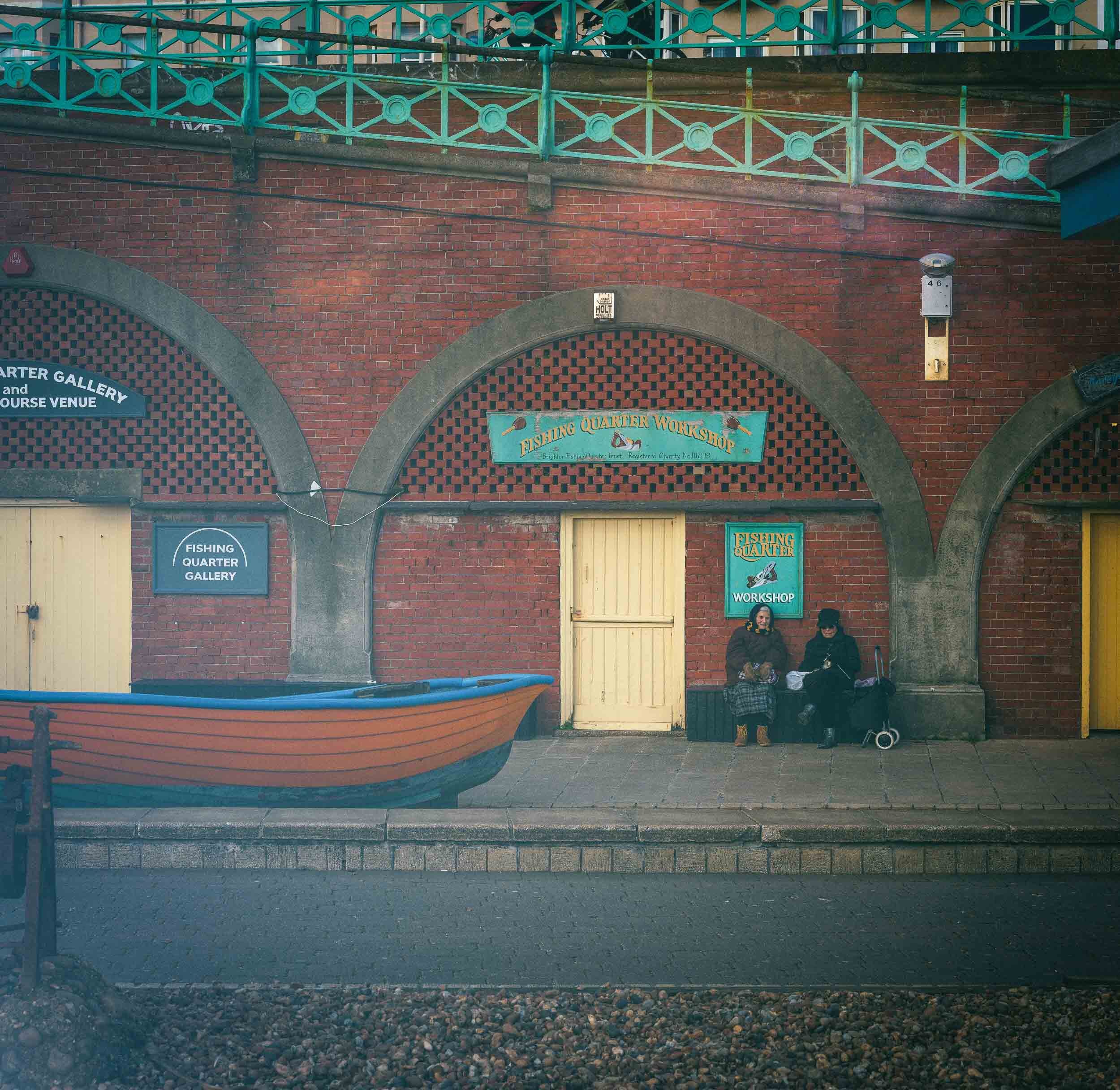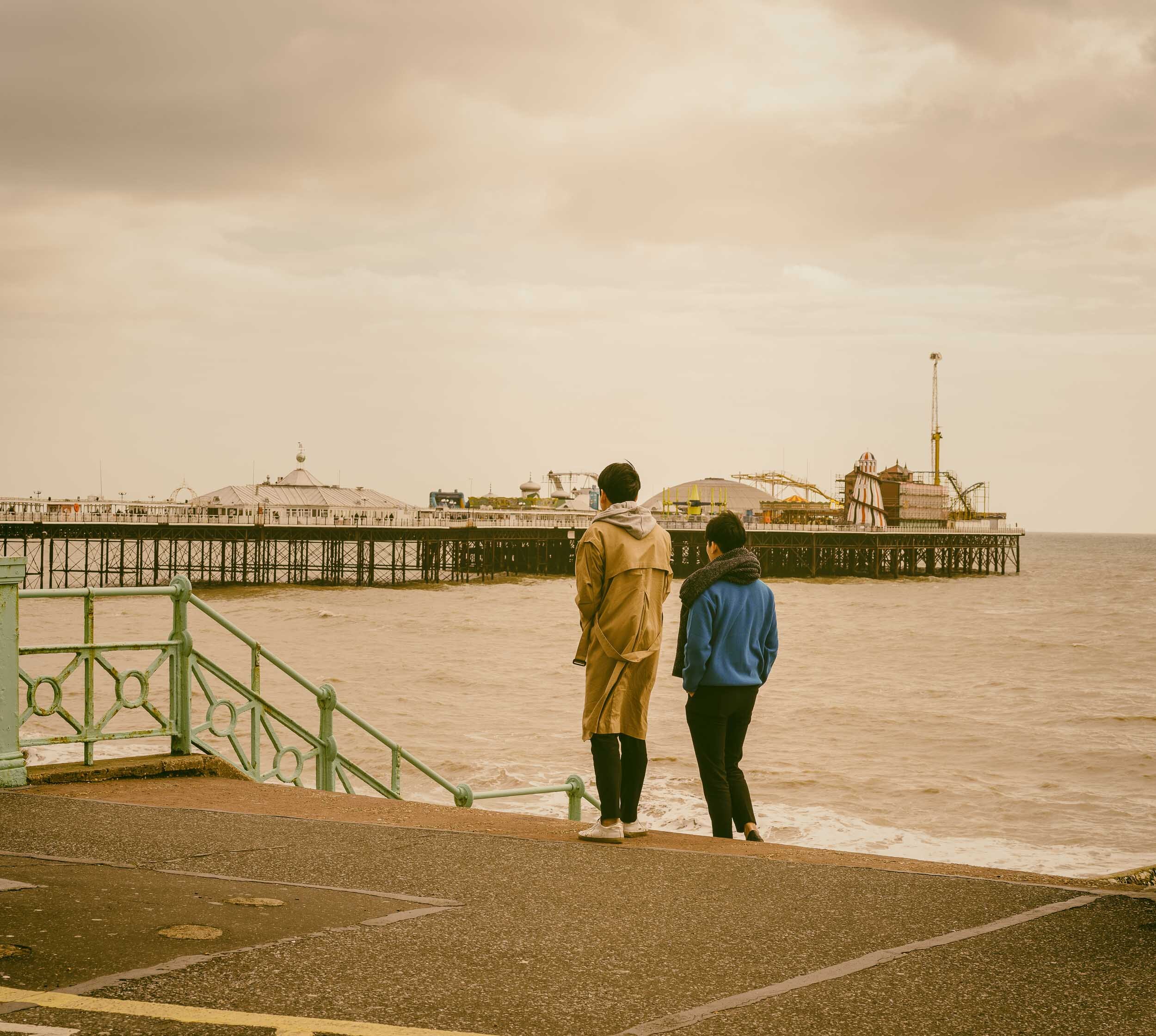The Best Aperture To Use For Street Photography
Passing Time Together
The best aperture to use for Street Photography is f /8 or anything approximate to that f-stop.
This is wide enough to allow you to use a fast action-stopping Shutter Speed and narrow enough to have enough Depth of Field across the scene.
Of course, these are just guidelines. There are much deeper technical variables, such as the light conditions, or the speed of your moving subjects and other technical choices which allow for extra creativity and excitement.
Let's take a look.
What is Aperture?
The diaphragm of the camera lens opens to let light in. The opening of the diaphragm is referred to as Aperture. The wider the diaphragm opens, the more exposure (light) there will come through the lens and hits the sensor and conversely, the narrower the opening the less light there will be.
The Aperture is calculated as figures called f stops.
E.g. Wide Opening - 1. 4, 2, 2.8, 4, 5.6, 8, 11, 16, 22 - Narrow
Depth of Field and Aperture
Depth of field and Aperture work together. If the depth of field refers to the amount of sharpness on a subject from front to back, then in order to blur out the background, you will need to select a wide aperture for a shallow depth of field. Generally, if you choose an aperture from f / 5.6 to f / 1.2 you will achieve a blurred background. Up the scale, the narrower the f stop, f / 8 to f /16 the greater depth of field there is. This result in increasing front to back sharpness which is great for Landscape Photography and also Street Photography.
Depth of Field and Focal Length
In practice, it does appear that longer focal lengths cause the background to appear more blurred than a shorter focal length. However, this is because a longer focal length magnifies the subject, including the background, which is due to the fact that longer focal lengths have a narrower field of view and will fill the frame with a smaller area of background, than a wide-angle lens.
For an in-depth look at Depth of Field and focal length please visit this great post by Cambridge in Colour.
Depth of Field and Street Photography
Street Portraits with a wide-angle lens can look fantastic, as they can exaggerate the subject's features when shot very close, and at the same time allow the background to go slightly out of focus. This allows the viewer to contextualise the image - they know it is a Street Portrait, as opposed to a portrait.
When shooting street photography and urban photography you generally want to use an aperture that keeps the background and the subject in focus which will serve a number of objectives:
The viewer can contextualise the scene.
It allows the street photographer to create an aesthetically-pleasing composition.
It also allows the photographer to emphasise the light and the shadows within the scene.
Bear in mind that your depth of field will be affected by how far away you are from the subject. The further you are when you focus, the more depth of field there will be.
Focusing, Depth of Field and Aperture
I personally use continuous autofocus when I am out shooting moving subjects and I have approximately a 95% keeper rate. I mostly use a 55mn lens, but for non-moving subjects, I sometimes take the relaxing choice by using an 18 - 75mm zoom lens. Even though I sometimes use an aperture of f / 2.8 at night, I am never too close to my subject to cause any serious background blur, so my sharpness is generally sharp across my body of work.
There is another method that ensures sharpness when shooting street photography, that many street photographers use religiously.
Zone focusing is a very quick manual focusing method for Street Photography that works best with wide-angle lenses. You pick your aperture and you pre-focus your lens and then when you shoot your subject, everything in the zone that you have pre-focused for will be in focus.
When you pre-focus you are setting the camera's focal distance, which gives you a near limit and a far limit of acceptable sharpness. Inside those limits is your zone for sharp subjects. For this to work well, it is best to select an aperture of f / 8 - f / 16, and it is also recommended to use a wide 35mm lens or even wider. This will improve your chances of having a decent-sized zone of acceptable sharpness. Make sure to keep your Shutter Speed at least 1/125sec to avoid any camera shake and increase your ISO to get that proper exposure, or use Auto ISO.
There are a couple of techniques to choose from in order to make Zone Focusing work for you.
If you have a Depth of Field Scale on your lens you can zone focus quickly and easily.
An app such as Photo Pills has a Depth of Field Calculator but also does so much more.
This is another simple but great tool to use if you want to Zone Focus - Depth of Field Master
Why Aperture is important for Street Photography
Aperture is fundamental for Street Photography because you want your subject to be in focus, but at the same time, you also want the background to be in focus as it provides context for your image.
Especially during the daytime, if you use an aperture that is too wide, then your image could be overexposed, (if it is clear and sunny) and/or you could miss out on some important details in the background.
Here are some examples which show why picking the correct aperture for your shots need consideration.
Notice in this image there is a potential story. The two old ladies could well be remarking on the younger woman in the green coat. Also, you can see a visual of the juxtaposition of young vs old.
In Different Times
But now watch what happens if the background was too out of focus.
This is why the aperture of f / 8 was the right choice for this image as there are a couple of ways that the viewer could interpret the image. Or if you look at it from the photographer's concept, a couple of themes that they want the audience to explore.
Another image shot at f / 8. Yet in this shot, the pier is so far into the distance that it definitely wasn't in my zone of focus. However, this has worked in the image's favour - If the pier and the water were just as sharp as the rest of the image, the scene would look flat and that visual sense of depth would be lost.
The Wondering Two
My go-to daytime street photography aperture is f / 8. However, with this image, even though the pier is slightly out of focus, I could have gone wider (maybe f / 5) and I might have had some better separation between the subjects and Pier.
This night urban street photo was shot at f / 2.8 with a focal length of 59mm. The foreground is slightly blurred, and the lamps in the background are even more blurry. I wanted all of the focus on the shop windows, with their light and tones along with the lamp looking suitably ethereal. (I was using a Pro-Mist Filter to create that halo glow around the lamp). If I had used a narrower aperture the background and the foreground would be in focus and I would lose the visual focus on my subjects. It would just look like a street at night.
Night Gifts
This image was shot at f / 3.5. If I was up close to that lamp post, the wall would be considerably blurred. However, because I was on the other side of the road, only the foreground is out of focus slightly, and everything you can see from the centre of the road up to the top of the frame is totally sharp.
High Street Blues
Aperture and the Exposure Triangle
Of course, as my mother used to say, 'With great apertures comes great responsibility.' If you choose f /8, depending upon the light conditions, the lens you are using and how confident you are at capturing shake-free images, then you will need to match your Shutter Speed and ISO accordingly to get a proper exposure.
Some photographers choose a Shutter Speed of at least 1/125th second. Others, like myself, would opt for at least 1/200 sec and I would either use Manual Mode and manually increase my ISO up to levels up to 3200 (top limit) or I would use Auto ISO in Aperture Priority mode and let the camera pick the ISO. With Auto ISO, if I set a minimum Shutter Speed of 1/200sec and then I can cap my ISO at 3200 (and also choose a minimum of 400)
Why mid Apertures are best for Street Photography
f/ 8 to f /5.6 are great apertures for street photography during the day and generally, an f-stop of f /5.6 to f/ 2.8 will be great for shooting at night.
At f /8 or an approximate aperture, you can be sure that you are getting decent sharpness within a specific distance, across the frame.
You aren't going to be getting any disappointment with seriously out of focus backgrounds when you get home and view your photos on your computer.
You are also going to be able to tell your story and show off any light and shadows.
If you use a very wide aperture on a bright, sunny day, there is more possibility of your images becoming over-exposed
However, at night you need more light to make a proper exposure and you might want to creatively blur out portions of the image to achieve a certain vibe so an aperture of f / 5 - f / 1.8 will be more appropriate, depending upon the light conditions.
Experiment
Of course, there is no law that says you must use a certain aperture. Why not go experiment and shoot all of your subjects at f / 2.8 or even f1. 4? Especially if you are shooting street portraits and even if you are not. Somebody in slight focus walking through a very blurry Times Square would be a very interesting photo. As would a blurry image of somebody walking down The Embankment by the River Thames with an umbrella in hand.
You could also take photos using a slow Shutter Speed for extra creative effect.
Sony Ambassador and YouTuber, Mark Galer has his own specific settings based around the Sunny 16 rule. He shoots at f / 16, 1/400 sec and if it is sunny he sets the ISO to 400, cloudy 800, cloudier, 1600, very cloudy 3200. That's another great technique that might work for you.
Conclusion
For my purposes and for the reasons that I have outlined above, the best aperture for Street Photography is around f / 8, but you might find it doesn't fit your creative style or your daily weather conditions. So use it as a guideline for getting sharp shots and give Zone Focusing a go and then try Continuous Autofocus and see what suits you.
Go forth and create.





